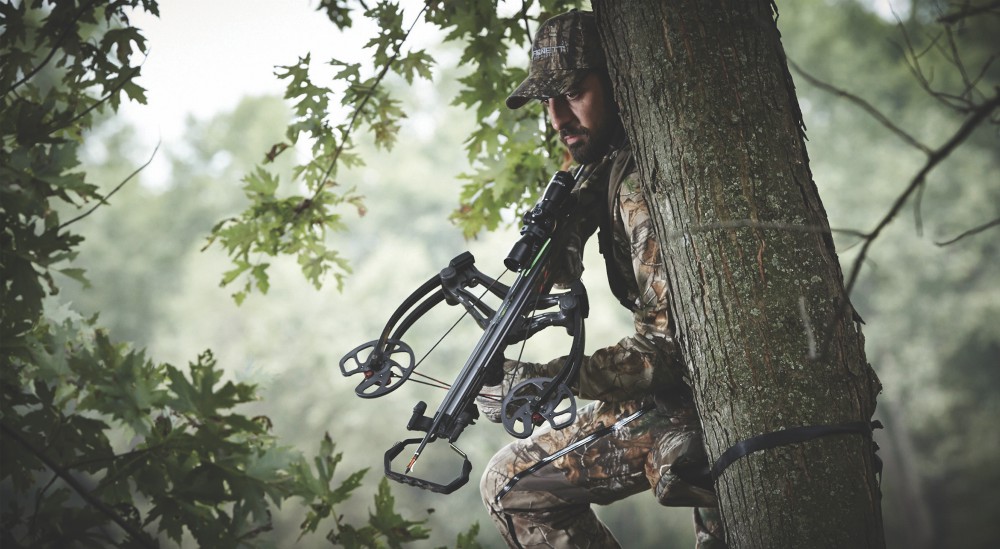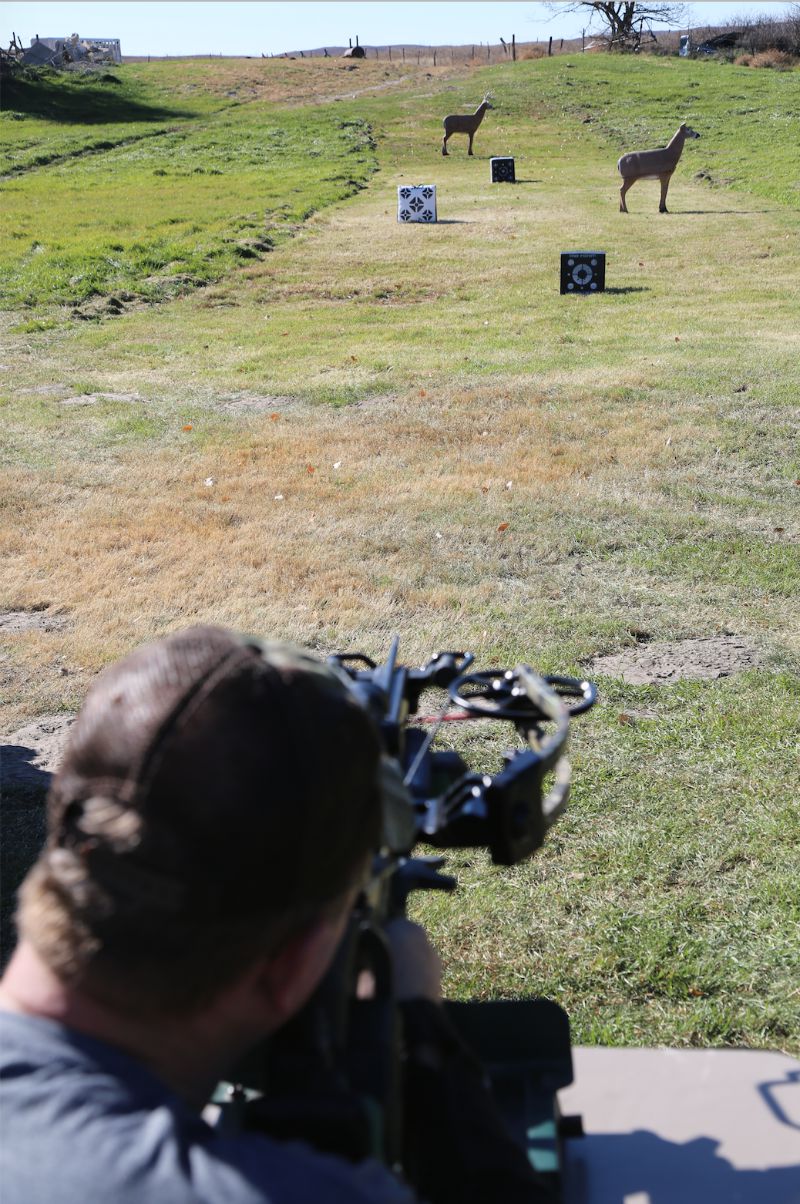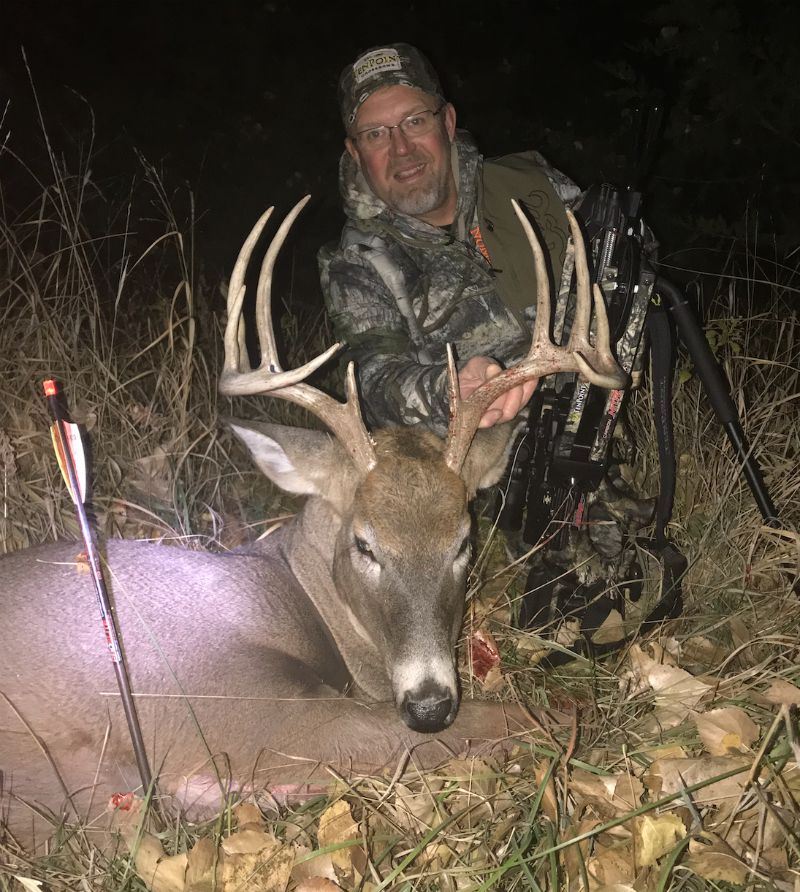Speed plays a big role in archery, and crossbow manufacturers are in a continual race to engineer a faster, quieter bow. However, no matter how hard those manufacturers try, the limbs, wheels and strings aren’t likely to produce arrow velocities faster than the speed of sound, which at 68 degrees Fahrenheit is 1,125 fps.
If engineers ever reach a point where they can send a bolt at the speed of sound, hunting will change forever. Until then, we must live with the fact that our quarry will often hear our bows, limbs, strings and bolt launch long before the broadhead reaches them. Considering the fastest hunting bolts shot from a crossbow fly about 400 fps, there is a split second in time between your crossbow making noise and your bolt reaching its target.
The problem with having a bolt travel at one-third to one-quarter the speed of sound is there is always time for reaction. Anyone who has hunted white-tailed deer with archery equipment doesn’t need an explanation of what “jumping the string” means. A mature whitetail is a bundle of nerves, wound tight like a heavy spring waiting to be set off. They survive by using their nose, eyes and ears, and when they hear a strange sound — like the release of a bowstring — they immediately duck and run.

Fact: On any given day, your maximum shooting distance will vary depending on environmental conditions.
No Wind
Environmental conditions play a big role in how I determine the maximum distance I will shoot to a deer. I spine-shot a decent-size whitetail buck two years ago when it was standing at 36 yards. It was dead calm, and with the still silence, I knew the buck would hear my crossbow. With his head down feeding, the buck went from a relaxed position to a contortionist in less than a second. The speed of my crossbow saved the day, and I consider myself lucky to have killed the deer cleanly. However, I learned a lot from that encounter.
Today, I limit my range to 30 yards on those church-mouse-quiet days. By reducing my maximum shooting distance, I help ensure I get an arrow in the vitals. The goal is always to make a quick, clean kill.
When the Wind Is Rocking
During those breezy days, especially the ones with wind speeds in excess of 20 mph, you can get away with taking a farther shot. Worried about wind drift? Let me put your mind at ease. This past year my hunting companions and I set up targets at 30, 40 and 50 yards and shot bolts to see just how much gusty winds affected bolt drift. To our surprise, the heavier arrows moved so little you couldn’t say drift was an issue. We shot crosswind, downwind and straight into the wind. The only bolt drift we could identify was at 50 yards, and the bolt was pushed less than an inch. There were no problems at all shooting into the wind or downwind. The biggest factor was having a solid rest, so your body could be stationary when trying to hold your crosshair on target.
This past season, I harvested my biggest crossbow buck to date at an honest 46 yards. Now, before you jump to conclusions and think I stretched my maximum distance, let me explain. The wind speed was 40 mph sustained. It provided a steady hum and buzz in my ears that made it difficult to hear those normal woodsy noises. I could see birds in the trees and squirrels rustling in the leaves, but I couldn’t hear them.
I set up on the downwind side of a long woodlot and watched deer funnel in and out of cover. Whitetails put up with wind all of their lives and often go about their business like nothing is wrong. Hunting from a blind, scent control was easy, and I quickly rigged and verified a good shooting rest.
My target buck ran back and forth in front of me at least four times, never offering a good shot opportunity. Early rut activity had him a little preoccupied, which is always good for a hunter. As the sun was setting, the buck fed out of the trees by himself and ended up at 46 yards, quartering away from me. The wind was gusting, tree limbs were swishing and swaying, and when I pulled the crossbow trigger, the deer didn’t react a single bit until the bolt passed through him. He hadn’t heard a thing.
Quiet Down!
You don’t always have the perfect weather conditions to help hide crossbow noise, but there are lots of things you can do to reduce vibration and oscillation.
Arrow weight plays a significant role in how much noise your crossbow makes. The heavier a bolt and broadhead combination, the more energy transferred from your bow to the bolt, leaving less residual energy to vibrate and keep your string and limbs in motion. Of course, you can also move up to a 125-grain broadhead, as the front-of-center weight often creates better arrow flight. With all the free apps on smartphones today, download a decibel meter and experiment for yourself. You’ll quickly see that by adding string stops and string and limb dampeners, and increasing the weight of your bolt and or broadhead, you can directly impact, in a positive way, the overall noise and vibration your horizontal rig produces.
Of course, there will be more arch in a heavy bolt/broadhead combo; there just has to be. More weight means a reduction in speed, but when we have a close look at trajectory with modern crossbows shooting heavier bolts, we are still well ahead of what we were hunting with just a decade ago.
Do yourself a big favor by playing on the range and seeing firsthand how tinkering with your crossbow, bolts and broadheads can put you in stealth mode. You’ll also understand the effects of wind and other variables, and you’ll be more apt to make a good decision when in the woods.
Sidebar: TenPoint RangeMaster Pro — A Clever Crossbow Scope
Shooting tip: Use a chronograph to find your bolt’s speed. Why? Because after you know the speed, it’s just a matter of dialing in the appropriate velocity on a modern crossbow scope such as the TenPoint RangeMaster Pro and then using the crosshairs to stay directly on target at known distances. Check out the video below to see exactly how to set this topnotch scope.








